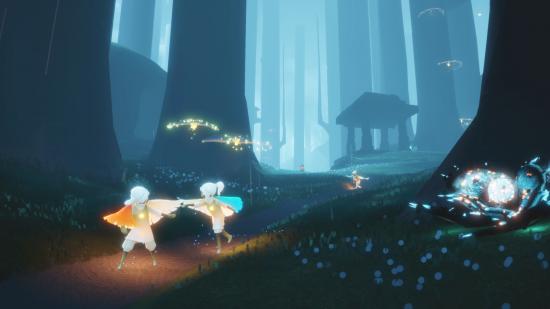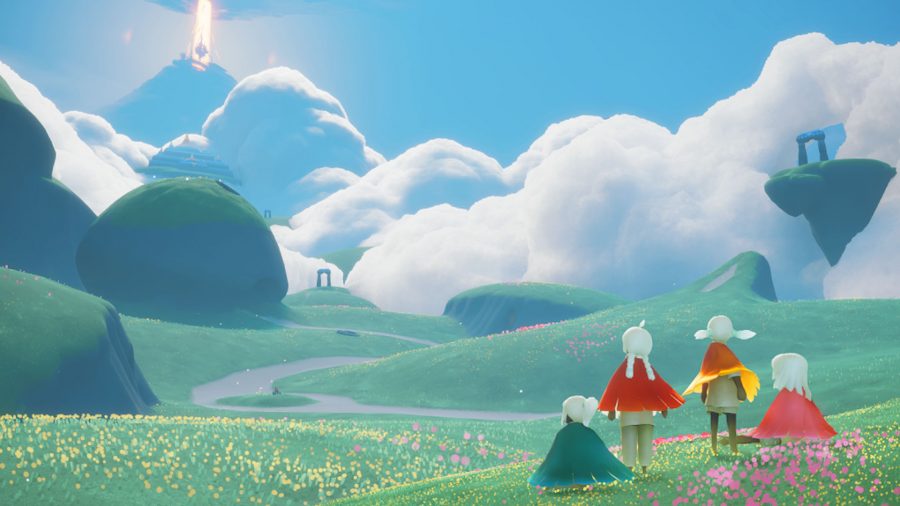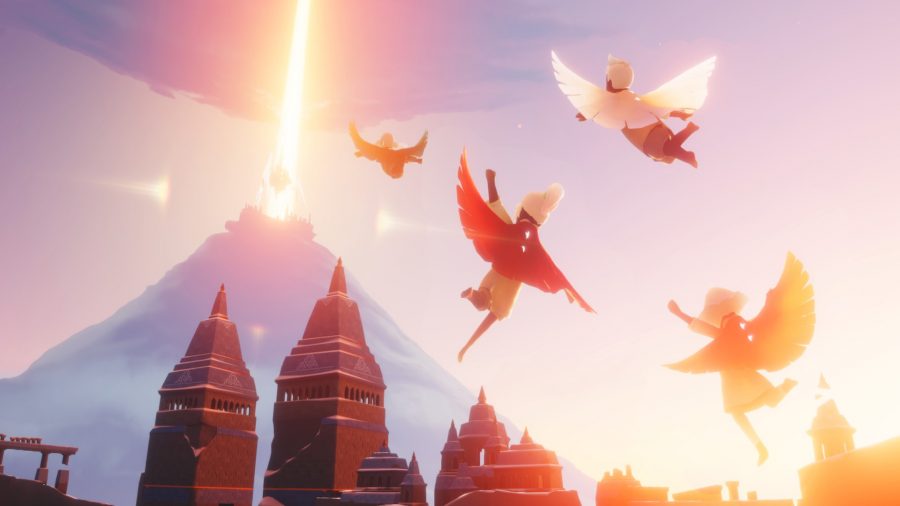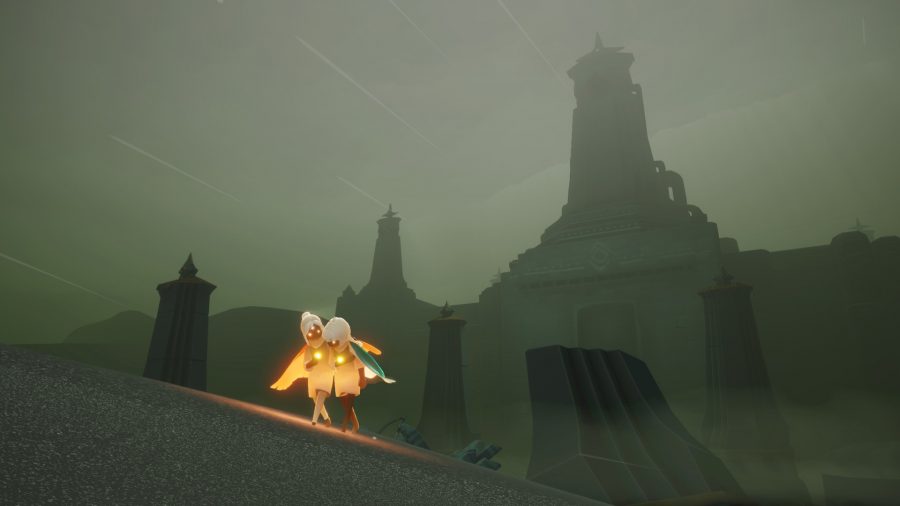During today’s GDC sessions I got to catch a talk by John Hughes, Feel Engineer at thatgamecompany, in which he explained how the social play mechanics in Sky: Children of the Light were designed. As one of the most iconic elements of the game, I was excited to hear what he had to say – especially about what inspired the game’s signature hand-holding!
Hughes began by discussing the initial development of Sky: Children of the Light, and how thatgamecompany knew it wanted the game to be social and based around flying together. He explained that the emotional experiences that many people had with Journey also became a cornerstone of Sky’s design philosophy.
Hughes defines social play as “any activity performed near other players, which encourages simulating the thoughts and feelings of others”. He clarified that this approach is essentially about encouraging empathy, and presenting opportunities for players to interact and create understanding between each other. But that isn’t always the easiest to accomplish, and Hughes went on to outline the ways that Sky is designed to encourage social play.
goal orientated play is the enemy of social play
Sky: Children of the Light was initially a very linear game, Hughes said, and that lead to play-testers not realising it was intended to be multiplayer. Thatgamecompany realised that the key to creating social play is actually boredom, and giving players spaces to slow down and interact with each other. Sky’s map design also developed from being linear into more of an open world, with various routes of traversal, and side paths to explore.
This is what led to Sky’s signature hand-holding, Hughes explained, as a way of letting players guide each other through these secret routes, and just generally explore together. A good guide creates an experience for the player they are showing around, inferring what spirits and gestures they might not have found, and helping them experience the world. In turn, that player is then able to show their appreciation through Sky’s heart economy and social gameplay loop.
social gameplay loop
Hughes mentioned that early on in play-testing, due to the lack of cosmetics, players would often pretend to be each other, and end up stealing gifts from others. This is how the heart economy came to be, allowing you to gift hearts and light to other players, giving them a mode of expression, and a way to personalise themselves with cosmetics.
As Hughes states, ‘expression is the core of social play’, so being able to express yourself, and earn more ways to do that through social interaction, is a big part of the gameplay loop. Hughes also referenced Joseph Campbell’s book, ‘Myths to Live By’, which discusses the role of ritual in community and social interaction. The reason other players are hidden in Sky is to create a ritual ‘meeting’ everytime you reveal someone with your candle, fostering the initial interactions between you.
cooperative social play
The idea that relationships require investment is also vital to Sky’s social play. Hughes gives examples like ‘fighting a monster’ together, or ‘unlocking a door’, and says that co-operative play isn’t the same as social play, and often makes us ‘treat other players as tools’ to accomplish a goal, rather than encouraging us to empathise with them. This is why unlocking further stages in a relationship requires an investment of candles in Sky.
It is also why the benches that let you chat with players are hard to get to, encouraging actual investment to talk to someone, while also using that as a crafty method to eliminate toxicity in the game. The key aspect of this investment is having the designer take a step back from trying to enforce player relationships.
ups and downs
As Hughes concludes: ‘you’ve got to have the ups and downs’. Investment is a scary part of social play and it makes you feel vulnerable, but that’s also what makes it feel great when someone reciprocates and you create a bond.
I found this part especially fascinating, since vulnerability has always felt to me like the most unique aspect of Sky’s social play. As Hughes states: ‘players progress relationships at different speeds’, and sometimes other players don’t reciprocate, but the vulnerability of each player pursuing those bonds is what makes it real, and what makes Sky so special.
If you’re still curious about Sky, we also covered Yuichiro Tanabe’s GDC 2020 talk about crafting the art of Sky: Children of the Light. We also have a Sky: Children of the Light guide for any looking to play the game!



